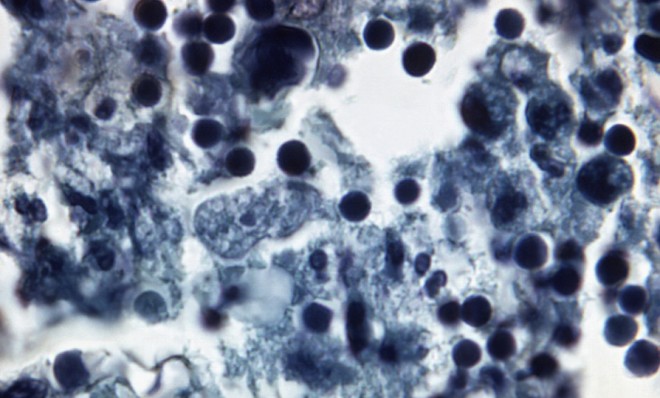Is global warming causing brain-eating parasites to flourish?
A deadly amoeba that thrives in warm waters has begun popping up in unexpected places


A 12-year-old Arkansas girl was hospitalized late last month after being infected by a fatal, brain-eating parasite.
The Arkansas Department of Health confirmed Friday that the girl had been infected by Naegleria fowleri, or N. fowleri, a rare amoeba that thrives in warm waters. After entering a host through the nasal cavity, it begins to eat away at brain tissue. The parasite can cause primary amebic meningoencephalitis (PAM), a deadly form of meningitis that typically results in death in five days; the disease has a 99 percent fatality rate.
While the amoeba has historically been found primarily in southern states with warmer temperatures — half of all known infections in the U.S. have occurred in Florida and Texas — it has moved further north in recent years to places like Minnesota and Indiana. That has some experts warning that climate change could help the parasite spread, and that N. fowleri's continued expansion could lead to an uptick in fatal infections.
The Week
Escape your echo chamber. Get the facts behind the news, plus analysis from multiple perspectives.

Sign up for The Week's Free Newsletters
From our morning news briefing to a weekly Good News Newsletter, get the best of The Week delivered directly to your inbox.
From our morning news briefing to a weekly Good News Newsletter, get the best of The Week delivered directly to your inbox.
"If warm weather keeps up, I think we'll see N. fowleri popping up farther and farther north," Travis Heggie, a Bowling Green professor who has closely studied the amoebas, told The Verge.
PAM infections are still incredibly rare. There have been only 32 reported cases in the last decade in the U.S., according to the Centers for Disease Control and Prevention.
Most PAM infections are traced back to people swimming in warm freshwater sources during the summer months when temperatures are high and water levels are low. The risk of infection goes up during heat waves and droughts, too, suggesting that extended temperature increases brought on by climate change could exacerbate the problem.
That's what one CDC scientist warned following a 2007 N. fowleri outbreak in Arizona.
A free daily email with the biggest news stories of the day – and the best features from TheWeek.com
"This is a heat-loving amoeba. As water temperatures go up, it does better," the CDC's Michael Beach said at the time. "In future decades, as temperatures rise, we'd expect to see more cases."
The CDC is now assessing that potential link to determine if continued warming will cause N. fowleri to turn up in even more far-flung places.
There's some evidence that it's already happening.
Minnesota saw its first ever cases of N. fowleri infections in 2010 and 2012. A study on those incidents published in the journal Clinical Infectious Diseases concluded that climate change could "impact the frequency of PAM," and that it possibly helped N. fowleri grow in Minnesota in the first place.
"[T]his organism can no longer be assumed to be an exposure risk only in southern-tier states," the study's authors warned.
Jon Terbush is an associate editor at TheWeek.com covering politics, sports, and other things he finds interesting. He has previously written for Talking Points Memo, Raw Story, and Business Insider.
-
 Joanna Trollope: novelist who had a No. 1 bestseller with The Rector’s Wife
Joanna Trollope: novelist who had a No. 1 bestseller with The Rector’s WifeIn the Spotlight Trollope found fame with intelligent novels about the dramas and dilemmas of modern women
-
 Codeword: December 20, 2025
Codeword: December 20, 2025The daily codeword puzzle from The Week
-
 Sudoku hard: December 20, 2025
Sudoku hard: December 20, 2025The daily hard sudoku puzzle from The Week
